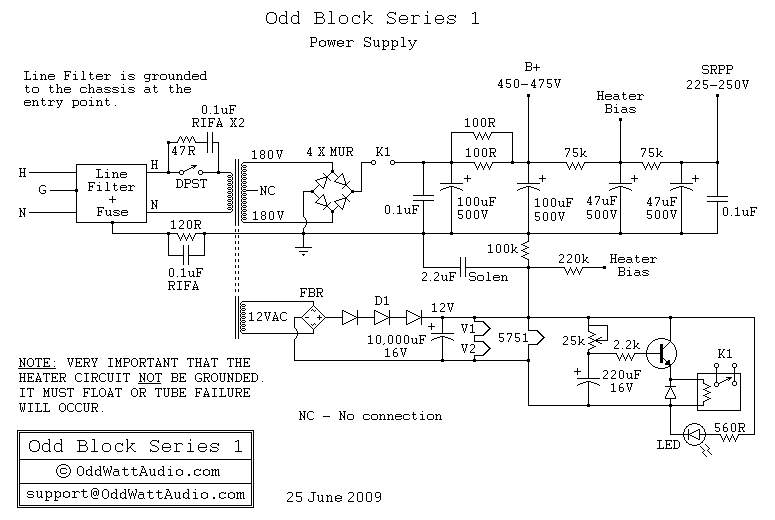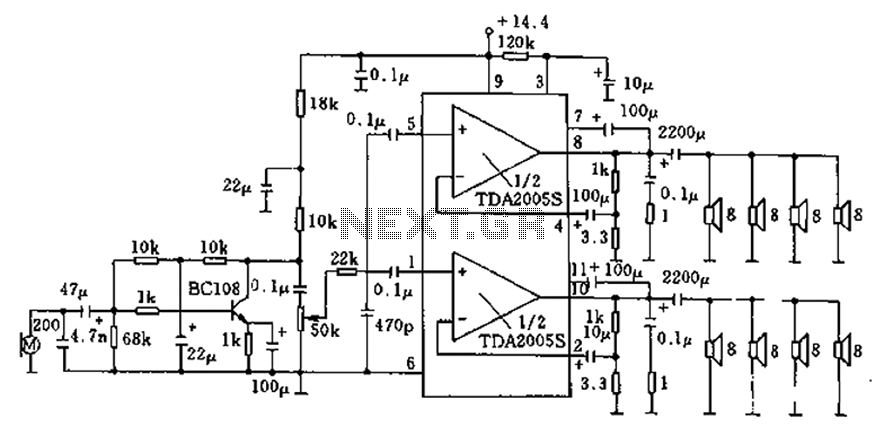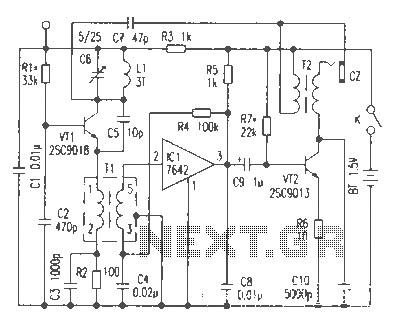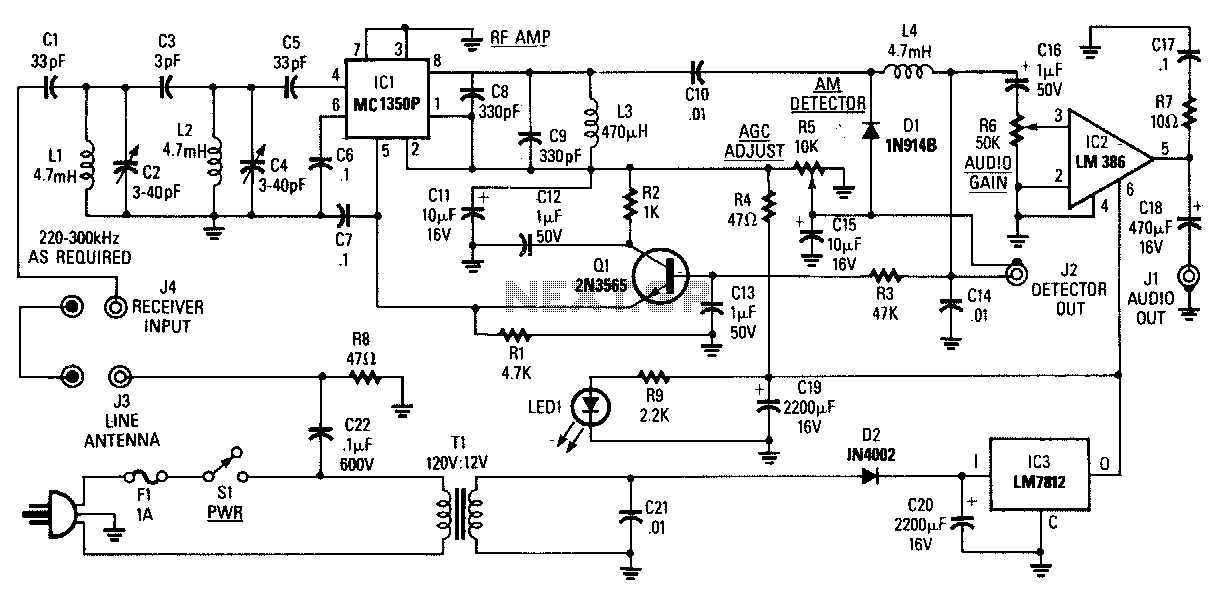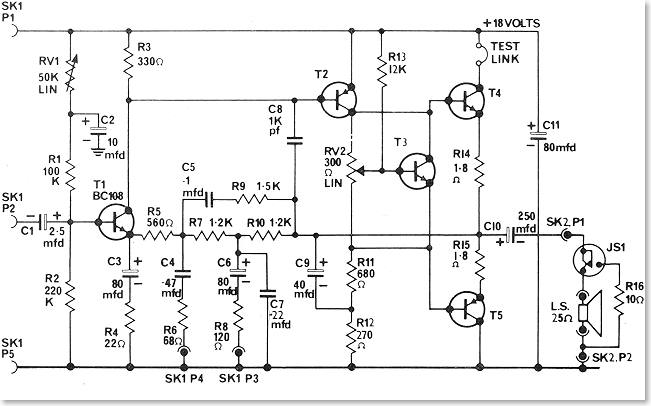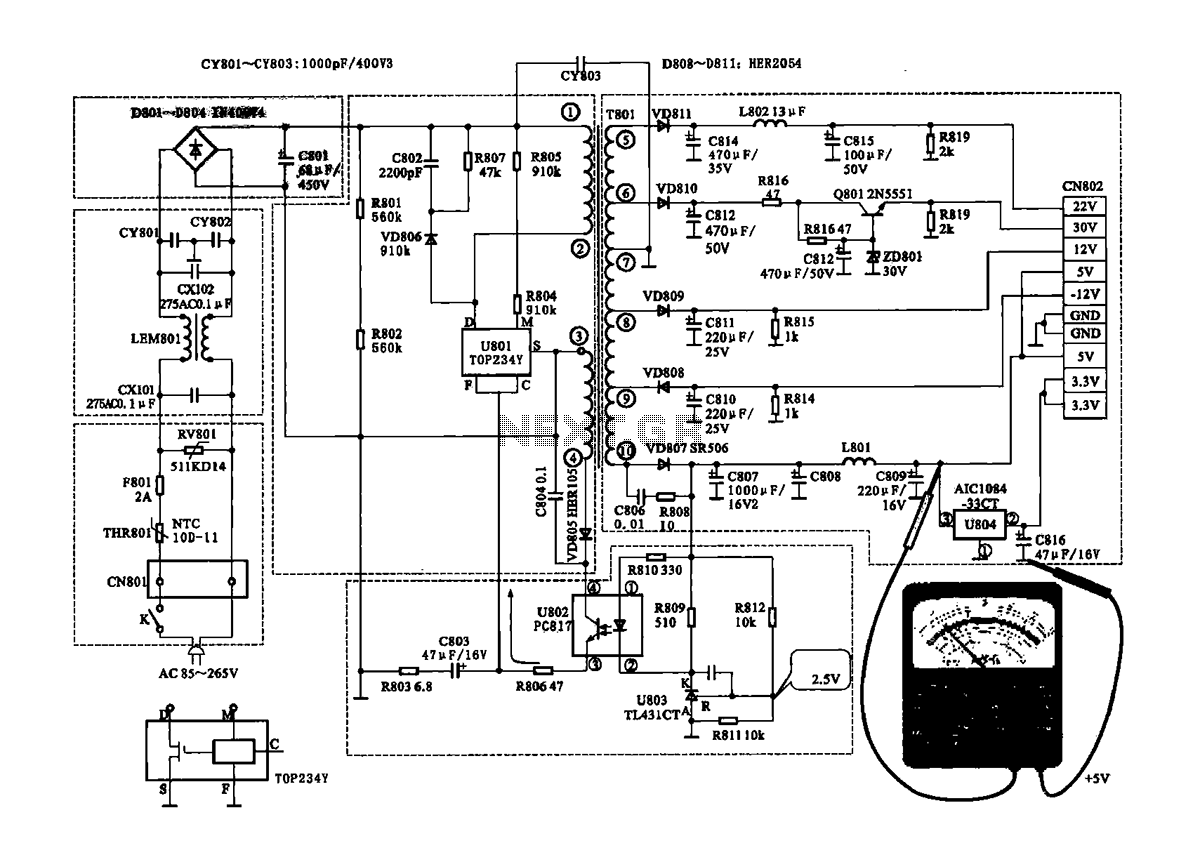
5 Tube AC/DC Radio Receiver

Nearly all AM radio manufacturers utilized this specific circuit from approximately 1948 to 1963. There is a growing interest in collecting these radios as antiques. Credit for the creator of this figure and caption is sought, but the source of the download is not remembered. If the creator is known, please reach out.
The AM radio circuit in question is characterized by its simplicity and effectiveness, which contributed to its widespread adoption during the stated period. The circuit typically includes essential components such as a power supply, an oscillator, a modulator, a detector, and an audio amplifier.
The power supply provides the necessary voltage levels for the operation of the circuit, while the oscillator generates the radio frequency (RF) signal that carries the audio information. The modulator combines the audio input with the RF signal, allowing the audio to be transmitted over the airwaves.
The detector, often a diode, demodulates the received RF signal, extracting the audio signal for further amplification. Finally, the audio amplifier boosts the audio signal to a level suitable for driving speakers, enabling sound reproduction.
This circuit design is notable for its robustness and ability to operate effectively in various conditions, contributing to the popularity of AM radios during the mid-20th century. The simplicity of the design also facilitated manufacturing, making these radios accessible to a broader audience. As a result, many collectors today seek out these vintage models, appreciating their historical significance and the nostalgia they evoke.Virtually all AM radio manufacturers used this exact circuit from about 1948 to 1963 or so. People are starting to collect these radios as antiques of sorts. I would be happy to credit the creator of this figure and caption, but I don`t recall from where I down-loaded this. If you made it or know who did, please give me an electronic holler. 🔗 External reference
The AM radio circuit in question is characterized by its simplicity and effectiveness, which contributed to its widespread adoption during the stated period. The circuit typically includes essential components such as a power supply, an oscillator, a modulator, a detector, and an audio amplifier.
The power supply provides the necessary voltage levels for the operation of the circuit, while the oscillator generates the radio frequency (RF) signal that carries the audio information. The modulator combines the audio input with the RF signal, allowing the audio to be transmitted over the airwaves.
The detector, often a diode, demodulates the received RF signal, extracting the audio signal for further amplification. Finally, the audio amplifier boosts the audio signal to a level suitable for driving speakers, enabling sound reproduction.
This circuit design is notable for its robustness and ability to operate effectively in various conditions, contributing to the popularity of AM radios during the mid-20th century. The simplicity of the design also facilitated manufacturing, making these radios accessible to a broader audience. As a result, many collectors today seek out these vintage models, appreciating their historical significance and the nostalgia they evoke.Virtually all AM radio manufacturers used this exact circuit from about 1948 to 1963 or so. People are starting to collect these radios as antiques of sorts. I would be happy to credit the creator of this figure and caption, but I don`t recall from where I down-loaded this. If you made it or know who did, please give me an electronic holler. 🔗 External reference
